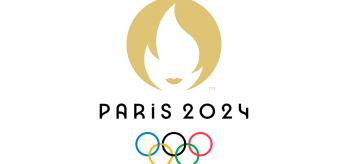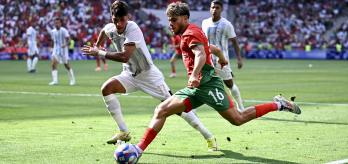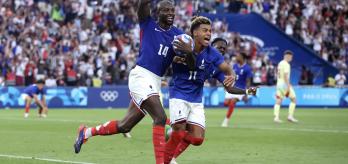A very competitive Group B was decided in the final round of games. All four teams went into their final matches on three points, having won one and lost one in the first two rounds of fixtures.
The four sides each had different strengths and styles of play, which made the meetings between them fascinating to watch. Line-breaking passes, forward runs and passing were all strong features of Argentina’s play, while the speed of Morocco’s counter-attack posed a real problem for their opponents. Argentina’s 2-0 victory over Ukraine on the final day, coupled with Morrocco’s 3-0 win against Iraq, secured passage to the quarter-finals for both teams.
Morocco
Under head coach Tarik Setkioui, Morocco showed themselves to be a technically gifted, dynamic, attacking team that play with speed and intensity. They were especially effective in wide areas, with Ilias Akhomach (10), Abde Ezzalzouli (16) and Eliesse Ben Seghir (7) strong in 1v1 situations. Given that strength, it was no surprise that Morocco aimed to create overloads out wide and especially on the right, where full-back Achraf Hakimi (2) played a key role in the attack. When they failed to break through on one side, they would quickly switch play to exploit the space on the opposite side of the pitch. Central midfielders Amir Richardson (18) and Oussama Targhalline (14) effectively operated as playmakers, often dropping into defence to start the build-up.
Out of possession, Morocco’s initial reaction to losing the ball was often to retreat into collective, compact, mid or low blocks. However, once they triggered the press, they pressed the opposition aggressively, and when they won the ball back, they transitioned to attack very quickly, targeting players in the wide areas.
Argentina
A key strength of Javier Mascherano’s team was its busy, energetic forwards, who made frequent offers and moves to receive the ball in behind their opponent's defensive line. This movement directly contributed to good goal-scoring opportunities, as their work rate kept defenders occupied and opened up spaces for their team-mates to exploit.
Defensively, Argentina pressed high and aggressively in an effort to win the ball back as close as possible to their opponents’ goal. However, with their wide midfield players tucked right into central midfield, they were occasionally vulnerable to counter-attacks down the channels, as we saw in their opening game against Morocco.
Ukraine
In possession, Ukraine built their attacks patiently and methodically as they tried to lure their opponents forward and create gaps in their defensive shape. Central midfielder Valentin Rubchynskyi (5) acted as the link between defence and midfield, waiting for the right moment to play line-breaking passes to the centre-forward. When the central passing lanes were closed off, Ukraine tended to get the ball wide (an area where they looked particularly dangerous), with their full-backs and central midfield players combining with the wide player to create overloads.
Defensively, head coach Ruslan Rotan usually set up his team in a 1-4-4-2 mid-block shape. However, they also showed they could drop into a compact, low, block, limiting the space for their opponents to play through. This was particularly evident in their game against Morocco, when Ukraine went down to 10 men and defended their goal in numbers. Their full-backs also proved comfortable in 1v1 defensive situations and effective at preventing crosses.
Iraq
Radhi Shenaishil moulded his Iraqi squad into a hard-working, organised team that aimed to build through the thirds – something they did with great success in their 2-1 victory over Ukraine.
Out of possession, they stayed compact and displayed spirited, resilient defensive qualities, but sometimes looked vulnerable when their opponents attacked the wide areas. Their defensive shape became quite loose at times, particularly when they faced quick switches of play.





























